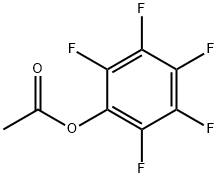Acetic acid octyl ester
- CAS NO.:112-14-1
- Empirical Formula: C10H20O2
- Molecular Weight: 172.26
- MDL number: MFCD00009562
- EINECS: 203-939-6
- SAFETY DATA SHEET (SDS)
- Update Date: 2024-12-18 14:08:57

What is Acetic acid octyl ester?
Description
Octyl acetate has a fruity odor reminiscent of neroli and jasmine with a fruity, slightly bitter taste suggestive of peach. May be synthesized by acetylation of the corresponding alcohol.
Chemical properties
CLEAR COLOURLESS LIQUID
Chemical properties
Octyl acetate has a fruity odor reminiscent of neroli and jasmine with a fruity, slightly bitter taste suggestive of peach.
Occurrence
Reported found in the essential oils of green tea, Heracleum giganteum L., orange peel, lemon peel, grapefruit peel, mandarin peel, Satsuma mandarin peel and pummelo peel. Also reported found in Ocimum basilicum varieties, wheaten bread, cheddar cheese, red wine, sparkling wine and nectarine.
The Uses of Acetic acid octyl ester
Octyl Acetate is a flavoring agent that is a colorless liquid with a fruity odor resembling orange and jasmine. It is miscible in alcohol, oils, and other organic solvents, and insoluble in water. It is obtained by chemical synthesis.
The Uses of Acetic acid octyl ester
1-Octyl Acetate is a component in essential oil extracts from Arnebia linearifolia which has been seen to promote antioxidant and antimicrobial activity. It is also a flavour ester contributing to products and foods requiring a fruity characteristic. Dyes and metabolites.
The Uses of Acetic acid octyl ester
Octyl acetate may be used as a reference standard for the determination of the analyte in wine samples and orange juice by chromatography based techniques.
What are the applications of Application
Octyl acetate is a compound found in citrus oils
Definition
ChEBI: The acetate ester of octan-1-ol.
Preparation
By acetylation of the corresponding alcohol.
Aroma threshold values
Detection: 23 to 47 ppb
General Description
Octyl acetate is one of the major constituents of the essential oils of Heracleum crenatifolium, oranges and grapefruit.
Flammability and Explosibility
Non flammable
Pharmacology
n-Octyl acetate inhibited acetylcholine at 14°C in isolated guinea-pig ileum by combining with the acetylcholine receptor on the muscle (Takagi & Takayanagi, 1966).
Safety Profile
Moderately toxic by ingestion. A skin irritant. Combustible liquid. When heated to decomposition it emits acrid smoke and irritating fumes. See also ESTERS.
Metabolism
In tests of the availability of energy from various compounds added to the diet, tt-octyl acetate was utilized satisfactorily by chicks and by rats
Properties of Acetic acid octyl ester
| Melting point: | -38.5°C |
| Boiling point: | 211 °C(lit.) |
| Density | 0.868 |
| vapor density | 5.9 (vs air) |
| vapor pressure | 29.1Pa at 25℃ |
| refractive index | n |
| FEMA | 2806 | OCTYL ACETATE |
| Flash point: | 187 °F |
| solubility | Insoluble in water |
| form | Liquid |
| color | Clear colorless |
| Specific Gravity | 0.87 |
| Odor | orange-jasmine odor |
| explosive limit | 8.14% |
| Water Solubility | 33.69mg/L at 25℃ |
| JECFA Number | 130 |
| BRN | 1754554 |
| CAS DataBase Reference | 112-14-1(CAS DataBase Reference) |
| NIST Chemistry Reference | Acetic acid, octyl ester(112-14-1) |
| EPA Substance Registry System | Acetic acid, octyl ester (112-14-1) |
Safety information for Acetic acid octyl ester
| Signal word | Danger |
| Pictogram(s) |
 Exclamation Mark Irritant GHS07  Health Hazard GHS08  Environment GHS09 |
| GHS Hazard Statements |
H227:Flammable liquids H303:Acute toxicity,oral |
| Precautionary Statement Codes |
P403+P235:Store in a well-ventilated place. Keep cool. |
Computed Descriptors for Acetic acid octyl ester
Acetic acid octyl ester manufacturer
New Products
Tert-butyl bis(2-chloroethyl)carbamate 4-Methylphenylacetic acid N-Boc-D-alaninol N-BOC-D/L-ALANINOL 3-Morpholino-1-(4-nitrophenyl)-5,6-dihydropyridin- 2(1H)-one Furan-2,5-Dicarboxylic Acid Tropic acid DIETHYL AMINOMALONATE HYDROCHLORIDE 1,1’-CARBONYLDIIMIDAZOLE R-2-BENZYLOXY PROPIONIC ACID 1,1’-CARBONYLDI (1,2-4 TRIAZOLE) N-METHYL INDAZOLE-3-CARBOXYLIC ACID (2-Hydroxyphenyl)acetonitrile 4-Bromopyrazole 5-BROMO-2CYANO PYRIDINE 5,6-Dimethoxyindanone 5-broMo-2-chloro-N-cyclopentylpyriMidin-4-aMine 2-(Cyanocyclohexyl)acetic acid 4-methoxy-3,5-dinitropyridine 2-aminopropyl benzoate hydrochloride 1-(4-(aminomethyl)benzyl)urea hydrochloride diethyl 2-(2-((tertbutoxycarbonyl)amino) ethyl)malonate tert-butyl 4- (ureidomethyl)benzylcarbamate Ethyl-2-chloro((4-methoxyphenyl)hydrazono)acetateRelated products of tetrahydrofuran








You may like
-
 112-14-1 n-Octyl Acetate 98%View Details
112-14-1 n-Octyl Acetate 98%View Details
112-14-1 -
 112-14-1 98%View Details
112-14-1 98%View Details
112-14-1 -
 n-Octyl acetate CAS 112-14-1View Details
n-Octyl acetate CAS 112-14-1View Details
112-14-1 -
 Octyl acetate CAS 112-14-1View Details
Octyl acetate CAS 112-14-1View Details
112-14-1 -
 n-Octyl Acetate CAS 112-14-1View Details
n-Octyl Acetate CAS 112-14-1View Details
112-14-1 -
 Octyl acetate 98%View Details
Octyl acetate 98%View Details
112-14-1 -
 Octyl Acetate CAS 112-14-1View Details
Octyl Acetate CAS 112-14-1View Details
112-14-1 -
 Octyl acetate CAS 112-14-1View Details
Octyl acetate CAS 112-14-1View Details
112-14-1